PUL Union Elbow — Professional Guide to One‑Touch Pneumatic Elbow Fittings for Compressed‑Air Systems
Product: PUL Union Elbow
Tagline: One‑touch, tool‑free pneumatic elbow fitting optimized for confined‑space piping and fast make‑and‑break tubing connections.
Introduction
The PUL Union Elbow is a one‑touch, push‑in pneumatic elbow fitting designed to provide fast, reliable, and compact connectivity for compressed‑air distribution systems. Engineered for applications where space is limited and rapid assembly or reconfiguration is required, the PUL Union Elbow allows tubing to be inserted and removed in seconds without tools, while providing threaded connections that are pre‑seal coated for simplified installation. This technical article presents a comprehensive overview of the PUL Union Elbow: its function, technical specifications, materials, key features, typical use cases, comparisons with alternative fittings, practical benefits and limitations, maintenance practices, and installation guidance intended for engineers, maintenance technicians, and system designers.
Technical Overview
The PUL Union Elbow is a 90° push‑in (one‑touch) union elbow designed exclusively for compressed‑air media. It combines the convenience of push‑in tubing connection with the mechanical advantages of a threaded port. In operation, a tubing end is simply pushed into the fitting until it reaches an internal retention stop; the integrated collet grips the tube and an internal O‑ring or sealing seat ensures an air‑tight connection. To disconnect, the external sleeve (collet) is depressed and the tubing is withdrawn.
Key operational characteristics include:
- Make‑and‑break speed: Assembly and disassembly typically take 1–2 seconds per connection and require no tools.
- Orientation: The 90° elbow geometry is optimized for routing in confined spaces, enabling rapid changes in flow direction without multiple components.
- Threaded port: Threaded port(s) are provided with a pre‑applied seal coating (e.g., PTFE‑based sealant) to simplify installation and minimize leakage risk.
- Media limitation: Designed and rated for compressed air only — not for liquids, aggressive gases, or vacuum service beyond the stated vacuum rating.
Functional Principles
Internally, the PUL Union Elbow follows the common push‑in fitting principle:
- Insertion: Tube engages a tapered inlet and passes through the collet; a retention ring (metal or polymer teeth) provides axial retention.
- Sealing: The tube end compresses against an internal O‑ring or sealing surface, providing a leak‑tight interface under operating pressure.
- Release: The collet sleeve is depressed to release the retention ring from the tube profile; the tube can then be withdrawn.
The elbow’s geometry and materials are chosen to balance low internal pressure drop with compact external dimensions to fit into complex machine architectures and panel assemblies.
Specifications and Dimensions
Below are the technical specifications and typical dimensions for the PUL Union Elbow family. Note that actual dimensions and weights may vary slightly by manufacturer or configuration; the values shown are representative typical values for design and selection.
| Parameter | Specification / Range |
|---|---|
| Intended medium | Compressed air only |
| Operating pressure | 0–150 psi (0–990 kPa) |
| Vacuum rating | Down to −29.5 in Hg (−750 mm Hg / ≈10 Torr) |
| Operating temperature | 0–60 °C (32–140 °F) |
| Connection type | Push‑in tube (one‑touch) to threaded port (pre‑seal coated) |
| Push‑in tube materials (compatible) | Polyurethane (PU), nylon (PA), polyethylene (PE), soft nylon tubing (confirm by OD and stiffness) |
| Disconnection | Depress sleeve; tool‑free |
| Typical collet retention force (pull‑out) | Varies by tube OD and type; typical static pull‑out range 25–120 N (estimated, dependent on tube material) |
Model Size Mapping
The following table maps common PUL model codes to tube outer diameters and the most typical threaded port sizes. The “Model code” naming convention typically follows the pattern: <Type> <φD> <Thread size> (example: PC 06 1/8).
| Model Code (example) | Tube Outer Diameter (φD) | Nominal Inch Equivalent | Common Thread Options |
|---|---|---|---|
| PUL 04 | 4 mm | ≈ 5/32″ | 1/8″, G1/8, M5 (application dependent) |
| PUL 06 | 6 mm | ≈ 3/16″ | 1/8″, 1/4″, G1/8, G1/4 |
| PUL 08 | 8 mm | ≈ 1/4″ | 1/4″, 3/8″, G1/4 |
| PUL 10 | 10 mm | ≈ 5/16″ | 1/4″, 3/8″, 1/2″ |
| PUL 12 | 12 mm | ≈ 3/8″ | 3/8″, 1/2″ |
| PUL 16 | 16 mm | ≈ 1/2″ | 1/2″, 3/4″ (larger assemblies) |
Representative External Dimensions and Weights (Typical)
The table below gives representative external dimensions and approximate mass for the elbow fitting configured with a common threaded port. Use these values for layout calculations; verify exact dimensions from manufacturer datasheets prior to final mechanical design.
| Model | Tube OD (mm) | Thread (example) | Length A (mm) | Height B (mm) | Depth C (mm) | Approx. Mass (g) |
|---|---|---|---|---|---|---|
| PUL 04 | 4 | 1/8″ | 22 | 16 | 14 | 6 |
| PUL 06 | 6 | 1/8″ | 24 | 18 | 16 | 8 |
| PUL 08 | 8 | 1/4″ | 28 | 20 | 18 | 12 |
| PUL 10 | 10 | 1/4″ | 32 | 24 | 20 | 18 |
| PUL 12 | 12 | 3/8″ | 36 | 26 | 22 | 28 |
| PUL 16 | 16 | 1/2″ | 44 | 32 | 28 | 45 |
Materials and Build Quality
The design of a reliable push‑in elbow fitting requires careful material selection to balance air sealing performance, long‑term durability, resistance to mechanical wear (collet teeth), and environmental compatibility. While specific manufacturer material choices may vary, the PUL family uses the following class of materials and construction techniques that are common in professional pneumatic fittings:
- Body: Brass (nickel‑plated) or engineered thermoplastic such as glass‑filled polybutylene terephthalate (PBT) or polyamide (PA). Brass bodies provide high mechanical strength, superior thread durability, and resistance to deformation at threaded connections. Thermoplastic bodies prioritize weight savings and chemical resistance to oils and cleaning agents.
- Collet (release sleeve): High‑performance acetal copolymer (POM) or polycarbonate (PC) with a stainless steel or plated‑steel inner sleeve in higher duty versions. The PC type described for PUL indicates hexagonal inner and outer profiles that facilitate wrenching and anti‑rotation in confined spaces.
- Retention ring/teeth: Stainless steel or spring steel, hardened and passivated for long fatigue life. This component ensures secure axial retention and resist slippage under vibration.
- Sealing elements: Nitrile rubber (NBR) is commonly used for the primary O‑ring/seal for compressed air at temperatures up to 60 °C. For higher temperature or chemical exposure variants, fluoroelastomer (FKM/Viton) seals may be specified.
- Thread pre‑seal coating: A factory‑applied PTFE‑based or anaerobic sealant reduces the need for third‑party tape or sealants and provides consistent sealing torque characteristics.
- External finishes: Nickel plating on brass or UV‑stabilized polymer finishes to improve abrasion resistance and electrical insulating characteristics where applicable.
Construction quality is validated via commonly used industry tests: pressure cycling (to validate seal longevity), vibration and pull‑out testing (to ensure collet retention under dynamic loads), and leak rate testing at rated maximum pressure. For critical installations, request manufacturer test reports showing compliance with relevant pneumatic fitting standards.
Key Features
The PUL Union Elbow incorporates a range of features that make it suitable for modern automated systems and compressed‑air distribution networks. Below are the key features and associated technical advantages.
One‑Touch Push‑In Connection
- Rapid tool‑free assembly and disassembly reduces installation time and maintenance downtime.
- Uniform push‑in depth and internal stop design ensure repeatable sealing and mechanical engagement.
Compact 90° Geometry (Elbow)
- Optimized for routing lines in tight assemblies where straight connectors would be impractical.
- Reduces the need for additional tubing bends and associated stress points.
PC Type with Hexagonal Profiles
- Hexagon inner and outer profiles on the PC type allow secure wrench engagement in confined workspaces.
- Hexagon geometry prevents rotation during torqueing of threaded connections, improving installation reliability.
Pre‑Seal Coated Threads
- Factory‑applied sealing coating reduces installation errors from under/over use of tape or sealants and speeds assembly time.
- Provides consistent torque versus seal performance and reduces the chance of thread galling on metal threads.
Wide Size Range
- Models support a range of tube diameters (4–16 mm) to suit light‑duty control lines through larger distribution lines.
- Matching thread sizes provide flexibility integrating with existing manifold or port dimensions.
Leak‑Resistant Design for Pneumatic Use
- Optimized sealing geometry for compressed air ensures low leakage at rated pressure and during repeated cycles.
- Vacuum compatibility down to approximate 10 Torr (~−750 mm Hg) allows brief vacuum hold during system purging or testing.
High Operating Pressure Range
- Operating pressure rating up to 150 psi (990 kPa) covers most industrial pneumatic systems used for actuation, air distribution, and control circuits.
Use Cases and Applications
The PUL Union Elbow is targeted at compressed‑air distribution and control applications where speed of assembly, compact geometry, and reliable threaded joints are essential. Typical use cases include:
1. Machine Builders and OEM Assemblies
Production equipment often requires dense piping in control cabinets, manifolds, and actuator banks. The PUL elbow’s compact 90° orientation and quick push‑in connection allow designers to minimize space and complexity on the machine frame. Its pre‑sealed threaded ports simplify manifold assembly on production lines where throughput and repeatability matter.
2. Maintenance and Repair Operations
Maintenance teams benefit from the tool‑free disconnection for troubleshooting, line replacement, or component swaps. Downtime is reduced because technicians can rapidly isolate sections, replace tubing, and reassemble without thread sealant application at each maintenance event.
3. Conveyor and Material Handling Systems
These systems frequently include pneumatic actuators, blow‑off systems, and vacuum‑assisted pick‑and‑place modules. The PUL elbow supports quick routing, minimal pressure drop, and durable threaded mounting into valve islands and manifold blocks.
4. Test Benches and Prototyping
In R&D or testing environments where frequent reconfiguration is required, push‑in fittings like the PUL elbow allow engineers to iterate rapidly without specialized tooling, and to swap tube sizes or routing paths efficiently.
5. Confined‑Space Routing (Control Panels, Enclosures)
The PC hex‑profile option ensures installers can apply the correct torque on threaded interfaces using small wrenches or spanners even when space is limited, ensuring reliable sealing and preventing rotation during operation.
Performance and Flow Considerations
When selecting and applying the PUL Union Elbow, consider the impact of fitting geometry on pressure drop and flow capacity. The internal bore is constrained by the tube OD/ID and the elbow geometry; consequently, larger tube sizes deliver higher flow rates and lower pressure drop but occupy more space. Typical Cv ranges (nominal values for flow estimation) are shown below—use them for approximate sizing in pneumatic circuit design. For precision sizing, consult manufacturer flow data charts or perform bench testing under expected operating conditions.
| Tube OD | Approx. Inner Diameter (ID) | Representative Cv (≈) | Typical Application |
|---|---|---|---|
| 4 mm | ~2.0–2.2 mm | 0.02 | Small signal lines, sensor air blow |
| 6 mm | ~3.0–3.2 mm | 0.05 | Actuator pilot lines, small valves |
| 8 mm | ~4.5–5.0 mm | 0.10 | General valve supply lines, low flow blowoffs |
| 10 mm | ~6.0–6.5 mm | 0.18 | Medium flow distribution |
| 12 mm | ~8.0–8.5 mm | 0.25 | Higher flow lines, branch distribution |
| 16 mm | ~10–11 mm | 0.50 | Main distribution trunk lines |
Note: Cv values above are representative for initial selection and should not be used as absolute design figures for critical pneumatic performance. Use manufacturer flow curves and pressure‑drop tables where precise performance is required.
Comparison with Similar Fittings
To evaluate where the PUL Union Elbow excels versus alternative fittings, the table below compares it against two commonly used elbow formats: a standard straight push‑in elbow (no threaded union) and a threaded compression elbow (ferrule/compression type). This comparison highlights trade‑offs relevant to specification and purchasing decisions.
| Attribute | PUL Union Elbow (One‑Touch Union) | Standard Push‑In Elbow (No Threaded Port) | Threaded Compression Elbow (Ferrule) |
|---|---|---|---|
| Tool requirement for tubing connection | None (one‑touch) | None (one‑touch) | Tools required to tighten |
| Tool requirement for threaded port | Wrench for thread; hex profile option minimizes space issues | Same as PUL if threaded version exists; often not provided | Wrench required for nut/seat; larger torque |
| Reusability / reconfiguration | High — quick disassembly | High | Medium — compression fittings can be reused but ferrules may deform |
| Sealing reliability at threaded joint | High — pre‑seal coating provided | Dependant on thread sealing method | Very high if properly torqued |
| Pull‑out strength | High (dependent on tube material and collet design) | Medium | Low (not applicable — compression is axial clamping) |
| Suitability for confined spaces | Excellent (PC hex option) | Good | Poor to moderate — larger nut clearance required |
| Initial cost | Moderate | Low to moderate | Higher (more components / machining) |
| Long‑term leak risk with repeated assembly | Low with pre‑seal coating and durable materials | Low | Medium — ferrule deformation or thread wear possible |
Benefits and Limitations
Benefits
- Rapid installation and maintenance: Push‑in connections reduce labor and downtime, particularly for systems that require frequent reconfiguration or testing.
- Space optimization: 90° elbow form factor and compact profile reduce the footprint of tubing networks in machine assemblies.
- Secure threaded mounting: Pre‑seal coated threads and PC hex profile options reduce installation errors and improve sealing reliability.
- Vacuum capability: Acceptable vacuum rating enables use in systems requiring evacuation or brief vacuum operations within the specified limit.
- Standardized tube sizing: Support for 4–16 mm tube sizes accommodates a wide range of pneumatic circuits from pilot lines to distribution trunks.
Limitations
- Media limitation: The fitting is intended for compressed air only. Use with other gases or liquids may degrade seals or compromise safety and performance.
- Temperature limits: Operating temperature capped at 60 °C. High‑temperature environments require alternative materials or fittings rated for higher temperatures.
- Flow restriction: Elbow geometry and push‑in bore limit maximum flow compared with larger purpose‑built manifold ports or welded piping.
- Tube compatibility: Not all tube materials and wall thicknesses are compatible; low‑quality or damaged tubing may reduce retention strength and increase leak risk.
- Mechanical stress: Collars and retention rings are designed for axial loads under normal conditions; external tensile or bending loads at the tubing connection should be minimized by securing the tubing near the fitting.
Installation and Care — Best Practices
Proper installation and maintenance are essential to achieving the stated performance and service life of the PUL Union Elbow. Below are professional guidelines for selection, installation, and maintenance for technical practitioners.
Pre‑Installation Checklist
- Verify the system media: confirm compressed air only (dry or lubricated lines acceptable depending on seal compatibility).
- Confirm the tube OD, wall thickness, and material compatibility with the fitting model.
- Ensure the threaded port type (inch or metric; BSPP, NPT, G, M) matches the mating port on the manifold or component.
- Check the manufacturer datasheet for recommended tightening torque and maximum linear pull for your tube type.
- Inspect fittings for shipping damage, crack in plastic components, or foreign debris in bores.
Installation Steps
- Prepare tubing: Cut tubing squarely using a proper tubing cutter. Deburr and remove sharp edges; ensure the end face is perpendicular to the tube axis to avoid seal damage.
- Insert tubing: Push the tubing into the fitting until it contacts the internal stop. For visual confirmation, mark the tube at the insertion depth to ensure full seating. Typical insertion depth is 8–15 mm depending on tube OD.
- Tighten threaded port: Thread the fitting into the mating component. Use a wrench engaged on the provided flats or hex profile. Torque to manufacturer recommended value — as a typical reference, small threads (1/8″) ~ 4–6 N·m; larger 1/2″ threads ~ 10–14 N·m. Do not exceed maximum torque specified by the fitting manufacturer.
- Leak check: Pressurize the circuit to operating pressure and apply a leak detection fluid or use a leak detector around threaded joints and push‑in interfaces. Listen for hissing and re‑verify torque for threaded connections if necessary.
- Secure tubing: Where motion, vibration, or heavy tubing runs exist, use clamps or tubing guides within 50–100 mm of fittings to reduce stress on the connection.
Routine Inspection and Maintenance
- Perform periodic visual inspections for signs of wear, cracking, or discoloration on polymer parts and look for thread corrosion on metal components.
- Check for leakage at operating pressure during scheduled maintenance. Replace fittings that show persistent leaks after re‑seating and torque verification.
- Replace O‑rings or worn collet elements if rework is performed frequently. Some manufacturers offer replacement collets or servicing kits.
- Avoid exposure to oils, solvents, or chemicals incompatible with the selected seal material (NBR, FKM, etc.).
- Before returning a system to service after prolonged disuse, cycle the fittings several times while performing leak checks to ensure seals remain compliant.
Troubleshooting Common Issues
- Persistent leak at push‑in interface: Ensure the tube is fully inserted, the tube end is cut square, and the tube material is not hardened or damaged. Replace the tube if it has nicks or deformation near the end.
- Difficult disconnection: A hardened tube or burrs can cause stickiness. Rotate the tube slightly while pressing the sleeve to release. If still stuck, depressurize the line before using controlled mechanical assistance to avoid damage.
- Thread leak after assembly: Re‑tighten to recommended torque, but do not over‑torque. If the pre‑applied seal coat shows failures, clean the threads, apply an appropriate thread sealant (compatible with compressed air), and re‑install.
- Pull‑out under load: Use a larger tube OD or a mechanical clamp near the fitting to reduce axial stress. Verify tube compatibility and collet condition.
Selection Checklist for Engineers
Before specifying a PUL Union Elbow in a bill of materials or design drawing, consider the following:
- Is the medium strictly compressed air? If not, select a fitting rated for the intended fluid.
- Does the system operate within 0–150 psi and 0–60 °C? If higher pressures or temperatures are expected, choose a higher rated fitting.
- What is the required tube OD and material — confirm compatibility and retention specs.
- Are mating ports BSPP/NPT/G/M metric? Confirm thread standard to avoid cross‑threading or mismatched seals.
- Do you require the PC hex profile variant for confined‑space wrenching or anti‑rotation? Specify as needed.
- Will the fitting be exposed to chemical cleaners or oils — select appropriate seal material (NBR vs FKM) and body finish.
Regulatory and Safety Considerations
Pneumatic fittings used in industrial equipment should meet applicable safety and regulatory requirements for pressure equipment and machine safety. Ensure that the selected PUL Union Elbow and its installation meet the following considerations:
- Verify pressure rating against the maximum operating pressure of the system and any potential pressure spikes.
- Confirm compatibility with machine safety standards relevant to the industry (e.g., ISO 4414 for pneumatic systems in machinery).
- Use thread types appropriate for the region and application (BSPP is common in Europe; NPT in North America) and ensure the presence of appropriate certification for the final assembly.
- Document maintenance intervals and leak testing criteria in the machine maintenance manual to ensure ongoing compliance.
Lifecycle and Environmental Considerations
PUL Union Elbow fittings contribute to sustainability in pneumatic systems by enabling quick repairs (reducing waste) and minimizing downtime. To maximize lifecycle:
- Prefer brass or stainless steel components when long term corrosion resistance is required.
- Where plastic components are selected, ensure UV‑resistant grades are used for outdoor or high UV exposure.
- Recycle metal components where local services are available at end‑of‑life; polymer components may be recycled depending on local facilities and resin identification.
Case Study — Typical Implementation in an Automated Assembly Cell
Scenario: A machine OEM is designing an automated assembly cell with a dense actuator array and a compact valve manifold. The design constraints include limited space behind the manifold block and the need for rapid commissioning and field servicing.
Solution using PUL Union Elbow:
- Use PUL 06 and PUL 08 elbows to route pilot lines from manifold ports to solenoid valves, minimizing 90° bends and reducing tubing interference with cabling.
- Specify the PC hex profile variant for manifold port interfaces where a small spanner must be used to tighten fittings inside a narrow manifold pocket.
- Install push‑in fittings with pre‑sealed threads to reduce assembly time on the OEM production line and lower the risk of cross‑threading or insufficient thread sealant application.
- Label tube insertion depths and store spare PUL fittings in the machine maintenance kit for quick replacement during service events.
Outcome: Commissioning time decreased by ~30% compared with compression fittings, maintenance MTTR (mean time to repair) improved due to tool‑free tubing changes, and the compact routing reduced tubing strain and failure modes.
Maintenance and Care Guide — Detailed Procedures
To achieve reliable long‑term performance, follow a structured maintenance regimen. Below is a professional maintenance checklist and step‑by‑step guide for field technicians.
Daily / Weekly Visual Inspection
- Inspect fittings and tubes for visible damage, chafing, or abrasion.
- Verify that tubing is properly clamped and free of undue tension near the PUL elbow connections.
- Listen for audible leaks during system operation and mark any suspect fittings for detailed inspection.
Monthly Functional Test
- Isolate the subsystem and depressurize before manual intervention.
- Cycle fittings by connecting and disconnecting a representative sample to verify collet release smoothness and seal seating.
- Check threaded joints for secure torque and retighten to specification if necessary.
- Replace seals (O‑rings) on fittings exhibiting slow leaks or hardened material.
Annual Preventive Maintenance
- Schedule removal and bench testing of representative fittings. Pressure cycle to manufacturer recommended life cycles if available.
- Examine collet teeth and retention rings for wear or deformation; replace if wear exceeds manufacturer limits.
- Inventory stock of spare fittings and tubing to support one full panel or machine rebuild (recommended for critical machines).
Replacement Criteria
- Unrepairable leaks after correct installation and torqueing.
- Visible cracks in body or sleeve components.
- Collet or retention ring deformation that exceeds retention strength or causes frequent accidental disconnection.
Conclusion
The PUL Union Elbow is a technically efficient, reliable solution for compressed‑air distribution where rapid make‑and‑break capability, compact elbow geometry, and leak‑resistant threaded connections are required. Its push‑in convenience accelerates installation and maintenance, while the PC hex profile and pre‑seal coating address practical assembly challenges commonly encountered in confined spaces and high‑volume production environments. Engineers specifying the PUL line should confirm compatibility with system pressures, temperatures, and tubing materials; adhere to recommended installation and torque values; and include routine inspection in maintenance schedules to maximize lifetime performance.
For applications requiring tool‑free operation, reduced downtime, and space‑efficient pneumatic routing, the PUL Union Elbow offers a balanced combination of performance, user friendliness, and manufacturability. When specifying these fittings, always refer to manufacturer datasheets for exact dimensions, material certifications, and detailed flow data for final selection and verification.
Keywords: PUL Union Elbow, one‑touch pneumatic elbow fitting, push‑in fitting, compressed air tubing, push‑to‑connect elbow, PC hex profile, pre‑seal coating, pneumatic fittings selection, installation guide.

 Tiếng Việt
Tiếng Việt
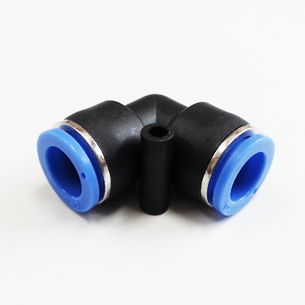
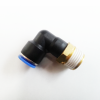
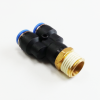
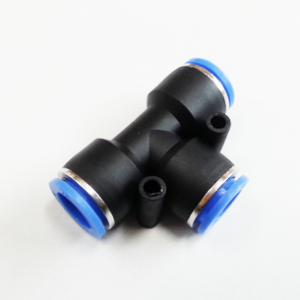
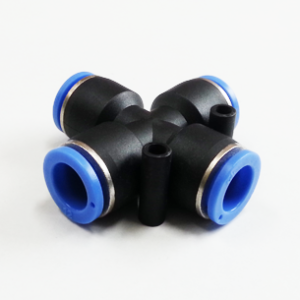
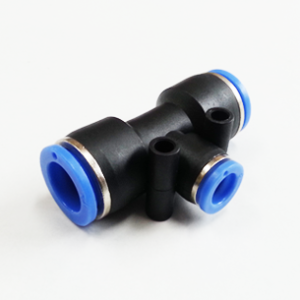

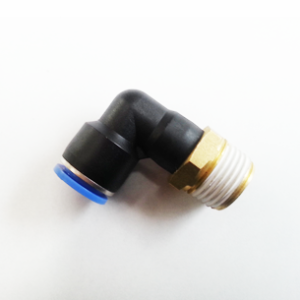
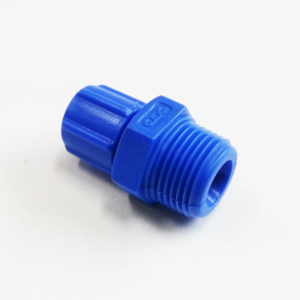
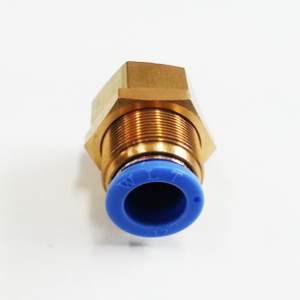
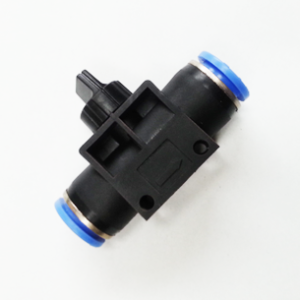
Reviews
There are no reviews yet.